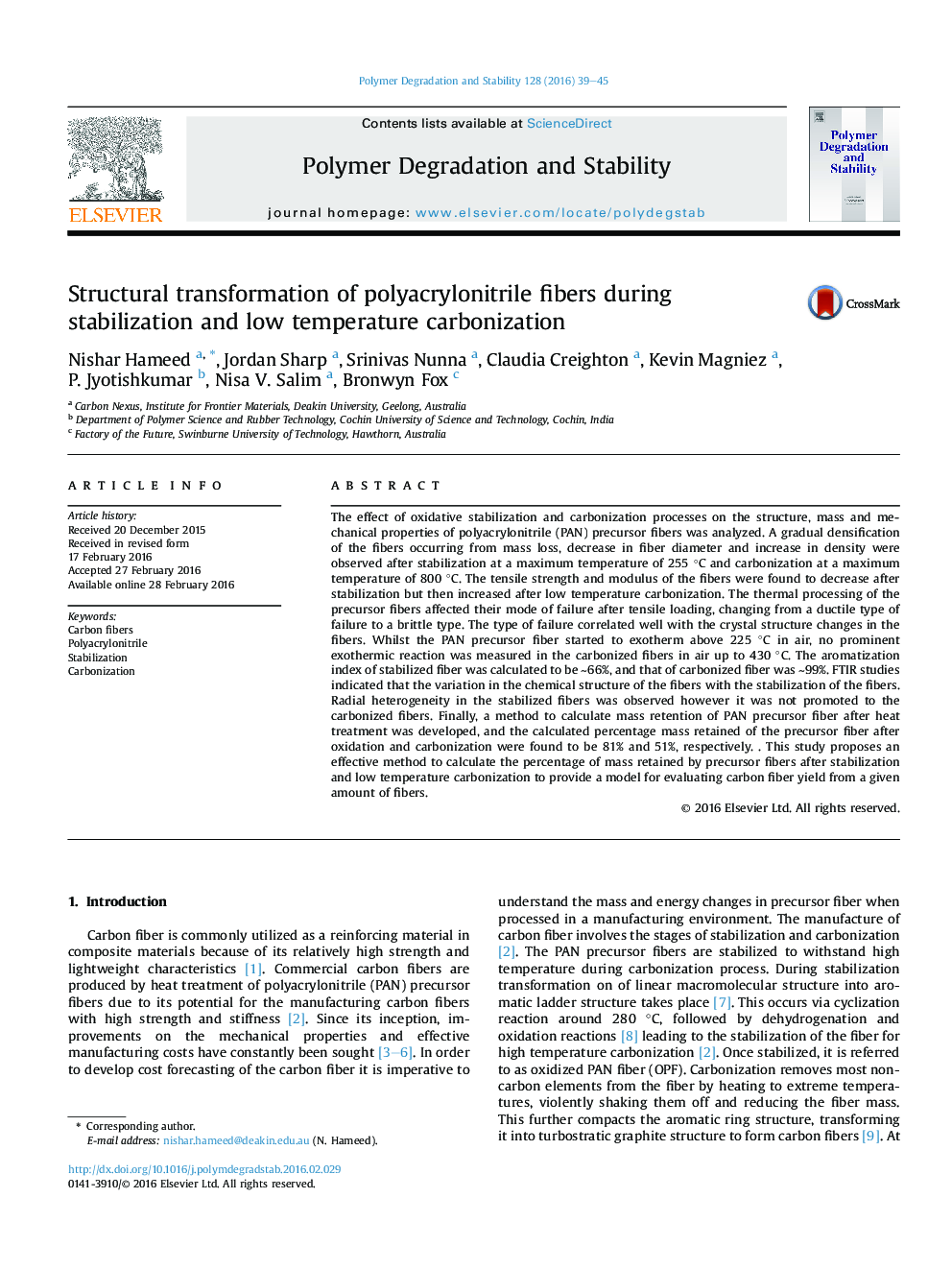| Article ID | Journal | Published Year | Pages | File Type |
|---|---|---|---|---|
| 5201179 | Polymer Degradation and Stability | 2016 | 7 Pages |
The effect of oxidative stabilization and carbonization processes on the structure, mass and mechanical properties of polyacrylonitrile (PAN) precursor fibers was analyzed. A gradual densification of the fibers occurring from mass loss, decrease in fiber diameter and increase in density were observed after stabilization at a maximum temperature of 255 °C and carbonization at a maximum temperature of 800 °C. The tensile strength and modulus of the fibers were found to decrease after stabilization but then increased after low temperature carbonization. The thermal processing of the precursor fibers affected their mode of failure after tensile loading, changing from a ductile type of failure to a brittle type. The type of failure correlated well with the crystal structure changes in the fibers. Whilst the PAN precursor fiber started to exotherm above 225 °C in air, no prominent exothermic reaction was measured in the carbonized fibers in air up to 430 °C. The aromatization index of stabilized fiber was calculated to be â¼66%, and that of carbonized fiber was â¼99%. FTIR studies indicated that the variation in the chemical structure of the fibers with the stabilization of the fibers. Radial heterogeneity in the stabilized fibers was observed however it was not promoted to the carbonized fibers. Finally, a method to calculate mass retention of PAN precursor fiber after heat treatment was developed, and the calculated percentage mass retained of the precursor fiber after oxidation and carbonization were found to be 81% and 51%, respectively. . This study proposes an effective method to calculate the percentage of mass retained by precursor fibers after stabilization and low temperature carbonization to provide a model for evaluating carbon fiber yield from a given amount of fibers.
